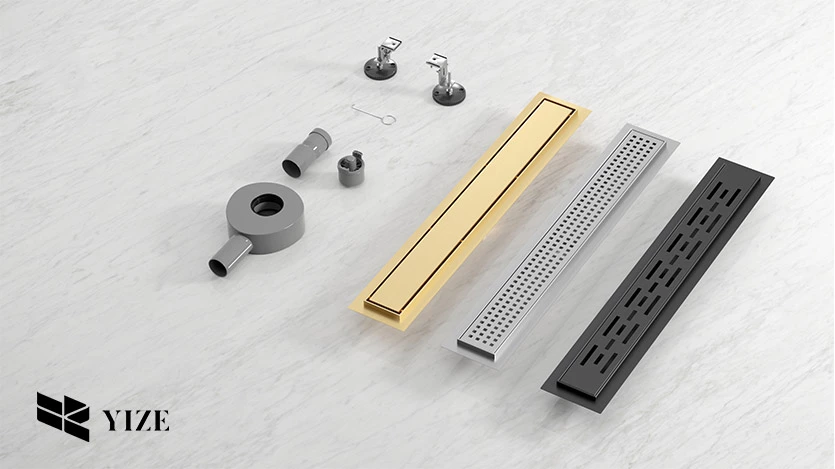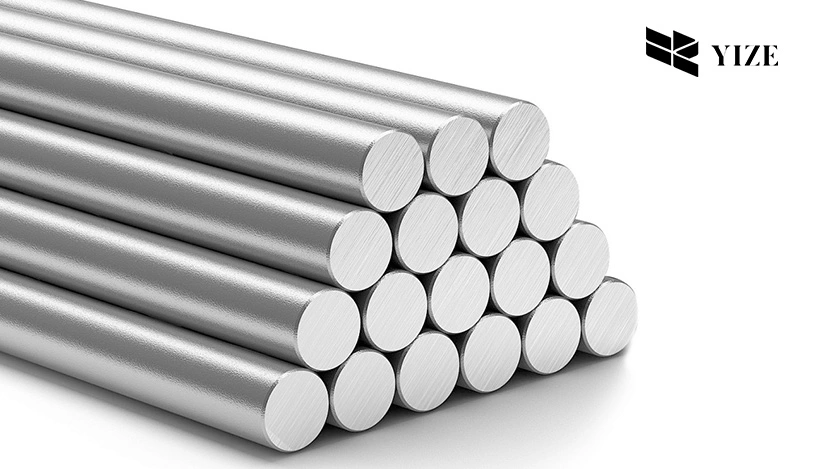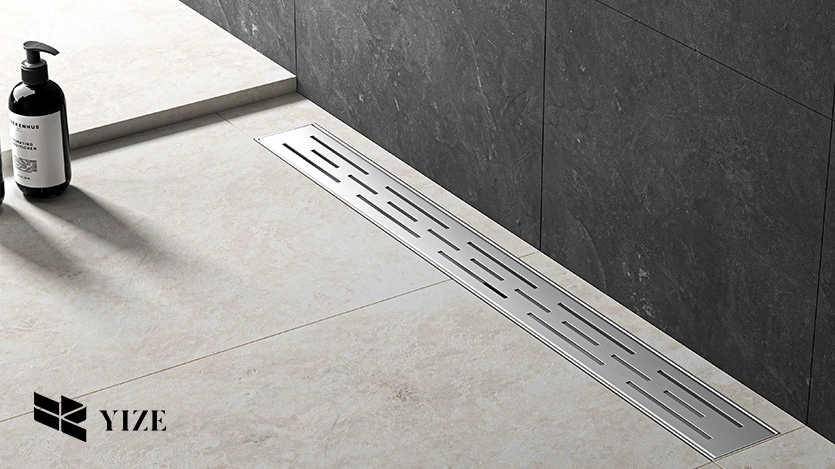
I. Introduction
The selection of the right linear drain becomes crucial in renovating a bathroom or any commercial building. Most of the current shower drain models are composite linear drains, while stainless steel models are also quite popular. To assist you in the right decision-making process in 2025, this article explores important aspects such as corrosion, durability, cost and appearance. It is crucial to know the advantages and disadvantages of these materials when using them for as a part of a low-cost or hygienic product.
II. Key Factors to Consider
1. Corrosion Resistance
Corrosion resistance is the ability of a material to stand exposure to water and other chemicals in the environment for a long period.
- Composite Linear Drains: These drains are made from non-metallic materials that prevent them from being affected by water and chemical damage. This makes them suitable to be used in areas where chemicals are a major concern.
- Stainless Steel Drains: The use of stainless steel makes it have natural tendency of not to be prone to corrosion. It is well suited to use in damp conditions and has a very long service life.
2. Durability
The durability factor describes the life expectancy of your drain before it becomes spoilt or loses its efficiency.
- Composite Linear Shower Drains: These are light weighted and do not easily get dented but are likely to crack under high pressure.
- Stainless Steel Drains: Recognized for their strength, stainless steel drains are ideal for use in populous areas and hauling weight without appearing compromised.
3. Cost
In many cases the cost is an important factor that dictates what type of materials are used.
- Composite Linear Drains: These are relatively cheaper and can therefore be preferred for projects where costs form a great concern.
- Stainless Steel Drains: Stainless steel is relatively costly because of its characteristics and the processes used in its production, but the savings on maintenance and replacement are significant.
4. Aesthetics
The look of a linear drain can often dictate how a space will look and therefore, the design of a space can be affected.
- Composite Linear Shower Drains: Sold in different colors and textures, they complement most décor styles.
- Stainless Steel Drains: A sleek and stylish appearance that works well within today’s environments is provided by this model.
III. When Composite Linear Drains are the Best Choice?

1. Chemical-Resistant Applications
Composite linear drains are also preferred in conditions that come into contact with strong chemicals like laboratories and industrial kitchens. This makes them withstand chemical attack thus can be used in harsh environments.
2. Cost-Sensitive Projects
In situations where the costs are of essence then composite linear shower drains offer a cheaper yet efficient way of addressing the drainage needs of a project. They offer consistent performance but with a lower cost than those of stainless steel.
IV. Where Stainless Steel Drains Excel?
1. High-Traffic Areas
Stainless steel is perfect for locations with a high traffic turnover including commercial facilities, showers, and gyms. Their durability makes you use them without being damaged hence are suitable for use.
2. Cleanliness and Hygiene
Stainless steel is also very easy to clean and does not support bacterial growth hence used a lot in hospitals, restaurants and any place that requires very high standards of hygiene.
V. How to Choose the Right Material for Your Project?

1. Analyze Your Needs
Consider the peculiarities of your project to be executed. Is it a bathroom in a house or an institution? Which is more important – the price, the quality, or the look?
2. Consider the Environment
If the installation area is a chemical or moisture prone environment then the composite linear shower drains would be the best suited. In crowded or areas that need a lot of cleaning, stainless steel is usually the best option to go for.
3. Longevity vs. Budget
Therefore, for the long term investment, it may be advisable to use stainless steel even though it is expensive. If you have a small project or a project that does not require high drainage, then composite linear shower drains will meet your needs for functionality while still being affordable.
VI. Conclusion
Both composite and stainless steel linear drains have advantages and disadvantages and the right one to use will depend on the particular circumstances. composite linear shower drains are cheaper and also do not react with chemicals while Stainless steel is known for its durability and hygiene. This helps one to balance between the functionality and the design since the factors that are in the consideration are related to both aspects.
In fact, while making the decision, one has to take into account the practical aspects of the product, its design, and possible costs. Whatever your project is, whether it’s a domestic property or a large industrial installation, it is important that you know the following materials in order to make the right decision in terms of your drainage system.
Frequently Asked Questions (FAQs)
1. Which type of linear drain is easier to install?
While both composite and stainless steel drains are fairly easy to install, the composite linear shower drains are lighter in weight, thus easier to maneuver during installation.
2. Are stainless steel drains worth the higher cost?
Stainless steel drains are beneficial for intensive use zones or works that call for maximum wear and tear and cleanliness.
3. Can I use composite linear shower drains in residential bathrooms?
Yes, composite linear shower drains are an excellent option for the installation in residential bathrooms for the simple reason that they are relatively cheap and resistant to moisture.
4. What is the best shower drain for long hair?
The best shower drain for long hair is one with a built-in hair strainer or trap. Linear drains with removable grates or covers are especially effective because they allow easy access for cleaning. Look for drains with fine mesh screens or catchers designed to prevent hair from clogging the pipes.
